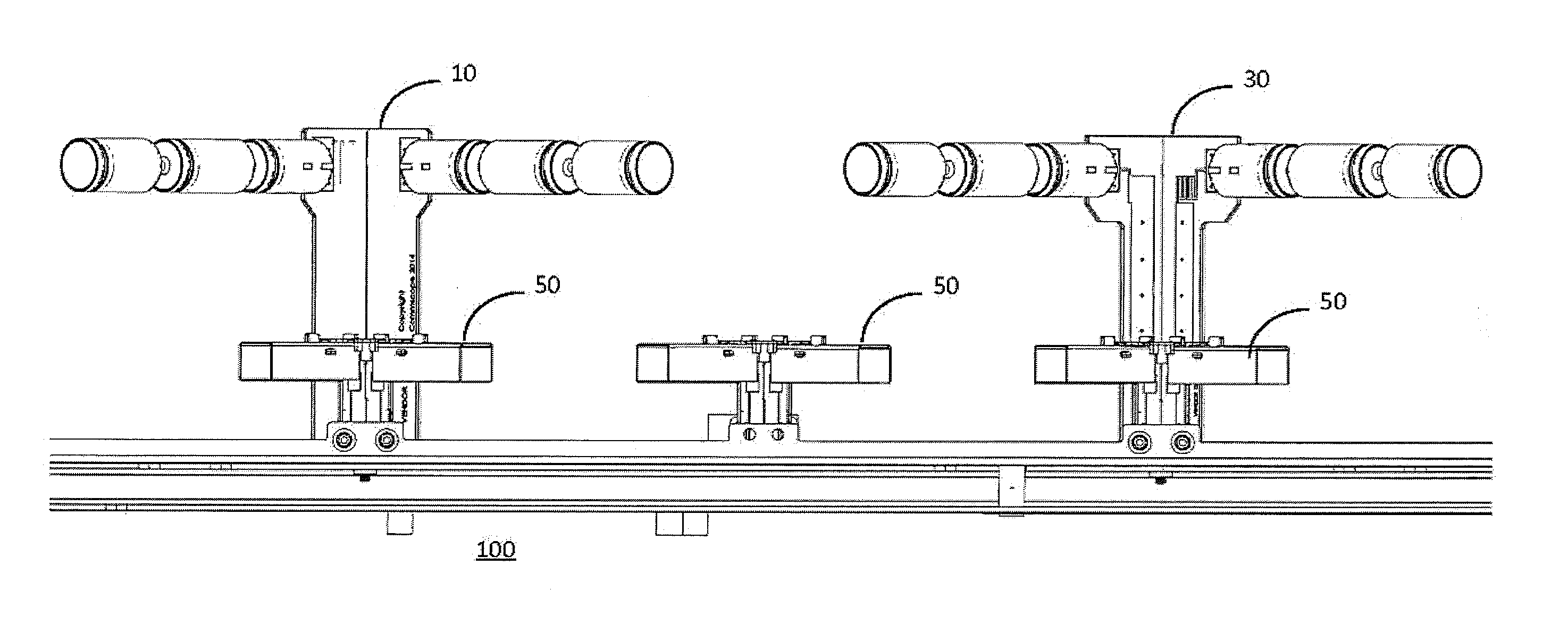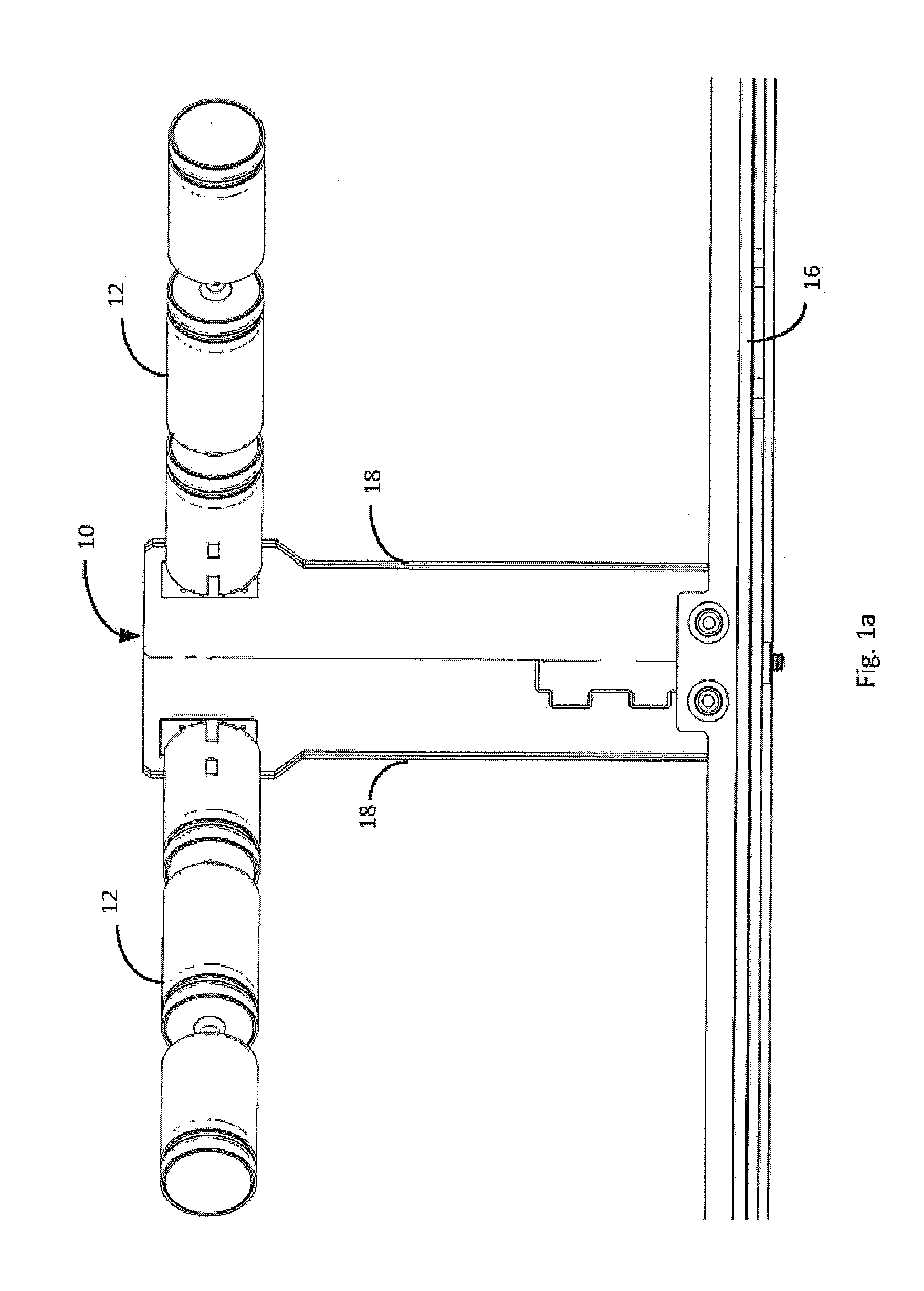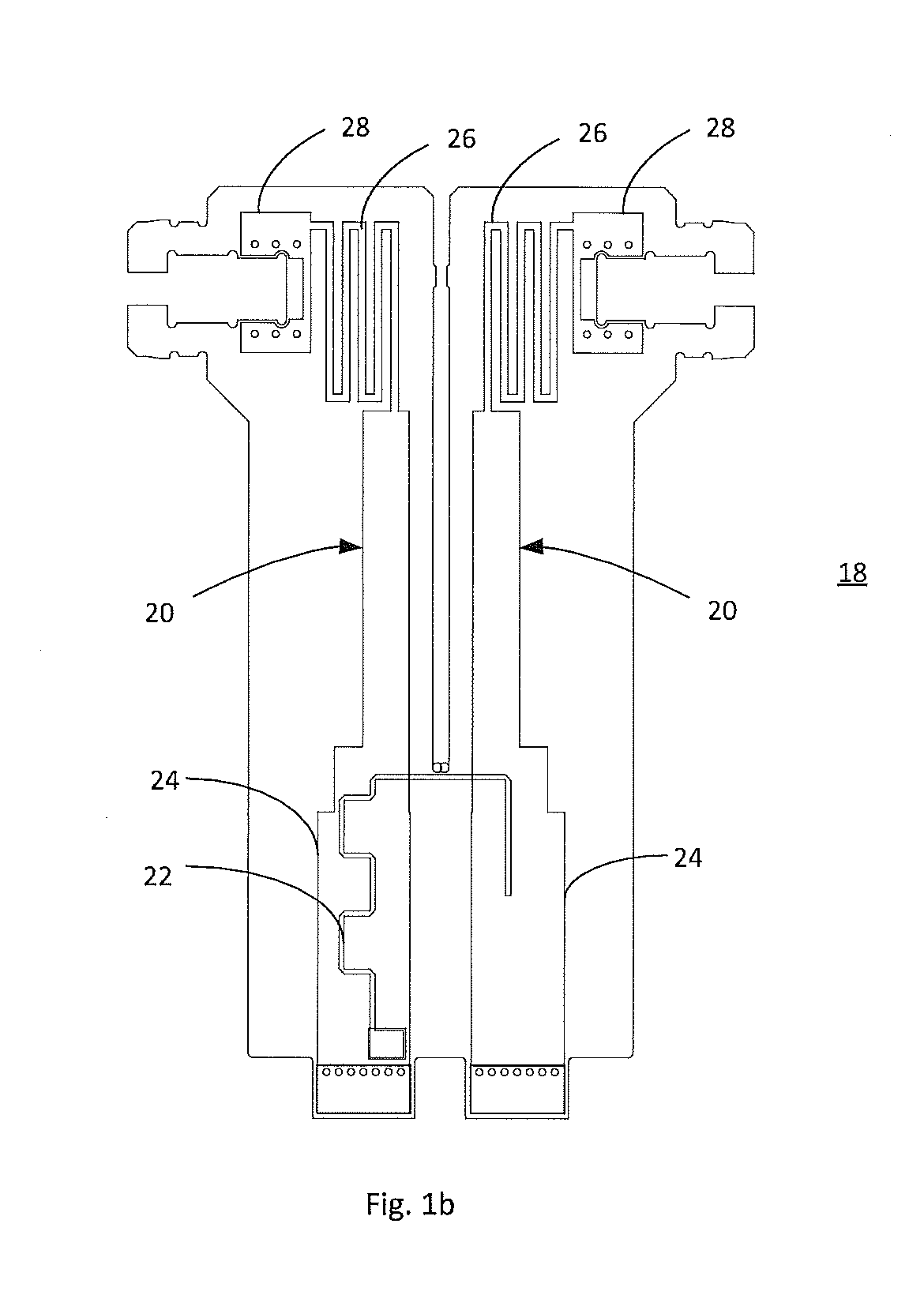Full wave dipole array having improved squint performance
a dipole array and full wave technology, applied in the direction of antennas, antenna details, antenna feed intermediates, etc., can solve the problems of cross polarization and squint degradation at certain frequencies, and achieve the effect of minimizing the squint of a beam pattern and improving squint performan
- Summary
- Abstract
- Description
- Claims
- Application Information
AI Technical Summary
Benefits of technology
Problems solved by technology
Method used
Image
Examples
Embodiment Construction
[0020]FIG. 1a illustrates one example of a microstrip support PCB radiating element 10. The microstrip support PCB radiating element 10 includes low band dipole arms 12 supported over a reflector 16 by microstrip support PCBs 18. In the illustrated examples, low band dipole arms 12 comprise full wave dipoles, which span from about three-quarters to one full wavelength of an operating frequency band of microstrip support PCB radiating element 10. Optionally, the low band dipole arms 12 include RF chokes that are resonant at high band frequencies to minimize scattering of high band elements. See, e.g., International Pat. Pub. No. WO 2014100938, (the “'938 Application.”), which is incorporated by reference.
[0021]In the microstrip support PCB radiating element 10, the low band dipole arms 12 are excited by microstrip support PCBs 18 (FIG. 1b). The term “microstrip,” as used herein, has its conventional meaning of a conducting strip separated from a ground plane by a dielectric layer, of...
PUM
 Login to View More
Login to View More Abstract
Description
Claims
Application Information
 Login to View More
Login to View More - R&D
- Intellectual Property
- Life Sciences
- Materials
- Tech Scout
- Unparalleled Data Quality
- Higher Quality Content
- 60% Fewer Hallucinations
Browse by: Latest US Patents, China's latest patents, Technical Efficacy Thesaurus, Application Domain, Technology Topic, Popular Technical Reports.
© 2025 PatSnap. All rights reserved.Legal|Privacy policy|Modern Slavery Act Transparency Statement|Sitemap|About US| Contact US: help@patsnap.com



